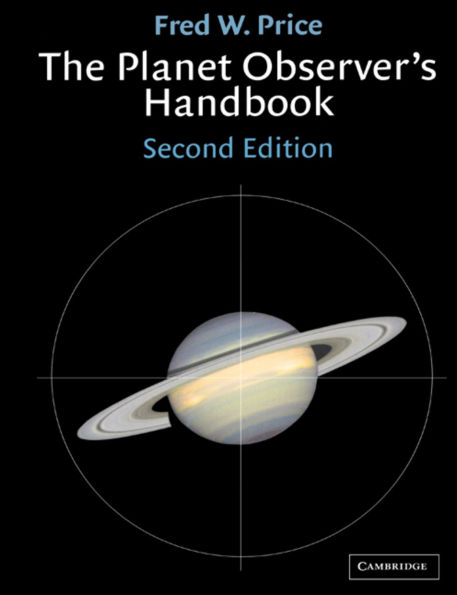The Planet Observer's Handbook
Here is an informative, up-to-date and well-illustrated guide to planetary observations for amateurs. After chapters on the solar system and the celestial sphere, the text explains how to choose, test and use a telescope with various accessories and how to make observations and record results. For each planet and the asteroids, Price gives details of observational techniques, together with suggestions for how to make contributions of sound astronomical value. From a general description and detailed observational history of each planet, readers learn how to anticipate what they should see and assess their own observations. New to this edition is a chapter on planetary photography that includes the revolutionary use of videography, charge coupled devices and video-assisted drawing. Another new feature is a section on the Kuiper Belt and Oort Cloud. Other chapters on making maps and planispheres and on photoelectric photometry round out the book's up-to-date treatment, making this indispensable reading for both casual and serious observer alike.
1000040714
The Planet Observer's Handbook
Here is an informative, up-to-date and well-illustrated guide to planetary observations for amateurs. After chapters on the solar system and the celestial sphere, the text explains how to choose, test and use a telescope with various accessories and how to make observations and record results. For each planet and the asteroids, Price gives details of observational techniques, together with suggestions for how to make contributions of sound astronomical value. From a general description and detailed observational history of each planet, readers learn how to anticipate what they should see and assess their own observations. New to this edition is a chapter on planetary photography that includes the revolutionary use of videography, charge coupled devices and video-assisted drawing. Another new feature is a section on the Kuiper Belt and Oort Cloud. Other chapters on making maps and planispheres and on photoelectric photometry round out the book's up-to-date treatment, making this indispensable reading for both casual and serious observer alike.
70.99
In Stock
5
1

The Planet Observer's Handbook
448
The Planet Observer's Handbook
448Paperback(Revised Edition)
$70.99
70.99
In Stock

Product Details
| ISBN-13: | 9780521789813 |
|---|---|
| Publisher: | Cambridge University Press |
| Publication date: | 10/26/2000 |
| Edition description: | Revised Edition |
| Pages: | 448 |
| Product dimensions: | 7.40(w) x 9.76(h) x 0.98(d) |
From the B&N Reads Blog
